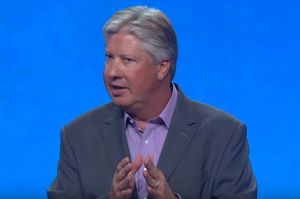Against Build Back Better: History shows government spending is not stimulus

As the United States debates the Build Back Better Bill, it’s worth looking at the actual economic history of the United States. COVID-19 crisis, shutdowns, and massive government spending programs have functioned something like a war economy, and the argument for continued spending is based on the premise that government spending is stimulative. Throughout the history of the United States, whenever the choice and action was taken to follow the Original Intent of America; that is, to rely on American Exceptionalism, America prospered, even in light of dire times and situations. The Depressions of 1920 and 1946 are real examples of this (see Harding and Coolidge Believe in Americans and Swords into plowshares: why the Truman economy was surprisingly successful). The years 1920 and 1946 certainly do not portray perfection, but neither are they intended to. They are examples of economic and Constitutional behavior which reflect closer to, rather than further from, the Original Intent of the United States. And as we see:
"…the real economic lesson to come out of World War II era was not that the conscription of nearly a fifth of the labor force into grueling and dangerous working conditions abroad and the imposition of a command economy at home – complete with rationing, price controls, and government allocation of many aspects of life – could bring unemployment down.
Instead, the true lesson from the period can be ascertained from the events of 1945-1947 when the largest economic “stimulus” in American history was dramatically and quickly unwound, months before most people anticipated it (because the atomic bomb brought a sudden unexpected end to the war.) No other episode more clearly supports the notion that the best economic stimulus is for the government to get out of the way.
Government canceled war contracts, and its spending fell from $84 billion in 1945 to under $30 billion in 1946. By 1947, the government was paying back its massive wartime debts by running a budget surplus of close to 6 percent of GDP. The military released around 10 million Americans back into civilian life. Most economic controls were lifted, and all were gone less than a year after V-J Day. In short, the economy underwent what the historian Jack Stokes Ballard refers to as the 'shock of peace.' From the economy’s perspective, it was the 'shock of de-stimulus.'
But, more importantly to the purpose here, many who lost government-supported jobs in the military or in munitions plants found employment as civilian industries expanded production – in fact civilian employment grew, on net, by over 4 million between 1945 and 1947 when so many pundits were predicting economic Armageddon. Household consumption, business investment, and net export all boomed as government spending receded. The postwar era provides a classic illustration of how government spending 'crowds out' private sector spending and how the economy can thrive when the government’s shadow is dramatically reduced.
American Exceptionalism shined despite the ominous prophecy of the Keynesians about the government pulling out of the economy. The Great Experiment, America, did not need government’s help. And despite some adjustment issues, the economy under the reins of the citizenry soared out of the war period to a period of prosperity. Perhaps Vedder and Gallaway said it best when they declared that:
"…within a year of the war’s end, it was clear that the pessimistic predictions were spectacularly wrong."
American Exceptionalism was spectacularly displayed to the prosperity of the nation as American businesses adjusted and brought prosperity to the nation.
Mark Thornton of the Mises Institute successfully summarizes the contrast between the Keynesian expectation of the ensuing economy of 1946 and the Austrian – and actual – expectation of 1946. Dr. Thornton writes:
"The proof for real austerity, however, came after World War II ended. All the Keynesian economists warned of a return of the Great Depression. In sharp contrast, the American Austrian School economist Benjamin Anderson predicted that the economy would recover, in a very short period, despite multi-billion dollar budget cuts and millions of government jobs being slashed. What was the verdict on this debate? There was no real Depression of 1946, as the economy recovered very quickly despite the fact that the government was running large budget surpluses.
The Austrian austerity solution works, and the Keynesian stimulus solution fails."
The Biblical view of human nature is inconsistent with permanently large government. Fallen human nature cannot be trusted with power, and humans are made with inherent dignity, and when permitted to be free, can lead to recovery. Just like after WWI, it is time for a “return to normalcy," the program of the Christian statesmanship of Warren Harding after WWI and the Spanish Flu.
Jim Huntzinger is the President and Founder of Lean Frontiers, Inc., which develops knowledge and learning communities on the Lean Enterprise for business and industry. With a background and experience in manufacturing and operations, he has also extensively researched the history and development of American manufacturing and also published several books on the lean business model, manufacturing history, and economics.





























